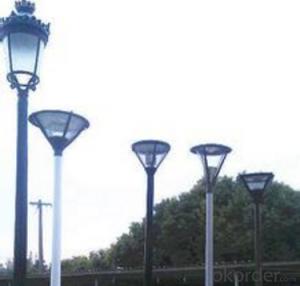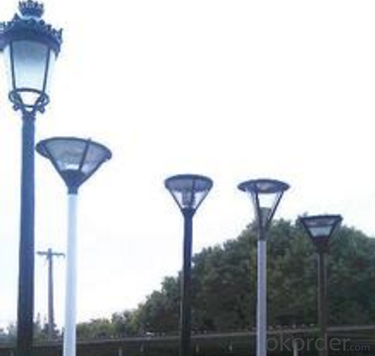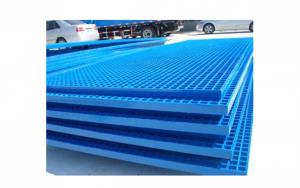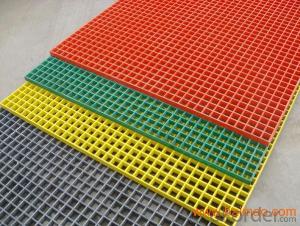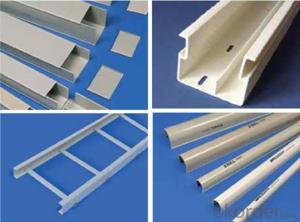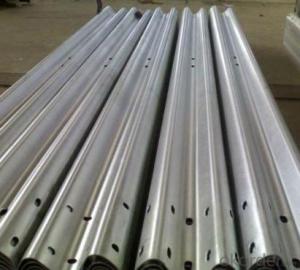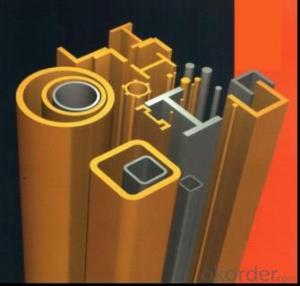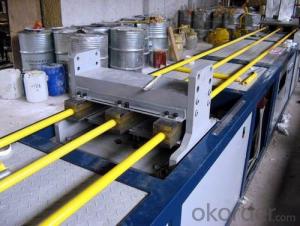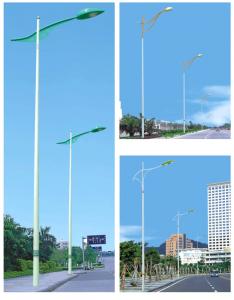FRP Lighting Pole made in China
- Loading Port:
- Shanghai
- Payment Terms:
- TT OR LC
- Min Order Qty:
- 100 m.t.
- Supply Capability:
- 10000 m.t./month
OKorder Service Pledge
OKorder Financial Service
You Might Also Like
Description of FRP Lighting Pole
With the development of lighting technology, and great changes have taken place in urban outdoor lighting, seek new material, new products become the inevitable trend.
FRP light pole, just as its name implies, is to install the lamp glass fiber reinforced plastic bar.
FRP light pole is mainly is made of high quality glass steel forming, the strength of the glass fiber reinforced plastic materials with high alloy steel.
Main Features of FRP Lighting Pole
Corrosion resistant, High strength, Non-conductive, Low maintenance&anti-ageing, Aesthetics, smooth and beautiful appearance, light weight and ease of assembly.
Specifications of FRP Lighting Pole
FRP base specification
| Length*width | Hole interval | Hole diameter | Thickness of base |
| 450*450 | 350*350 | 30 | 30 |
| 400*400 | 300*300 | 28 | 30 |
| 330*330 | 230*230 | 28 | 25 |
Steel base specification
| Length*width | Hole interval | Hole diameter | Thickness of base |
| 450*450 | 350*350 | 30 | 20-30 |
| 400*400 | 300*300 | 30 | 16-30 |
| 330*330 | 230*230 | 30 | 12-20 |
Applications of FRP Lighting Pole
Public Square, Park, Street, Capital airpoor, Courtyard, Highway, Factory, Bridge, Packing lots.
IMages of FRP Lighting Pole
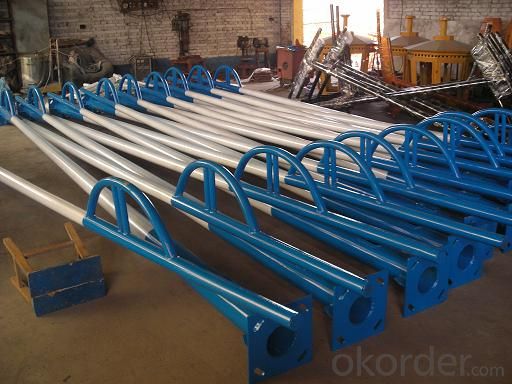

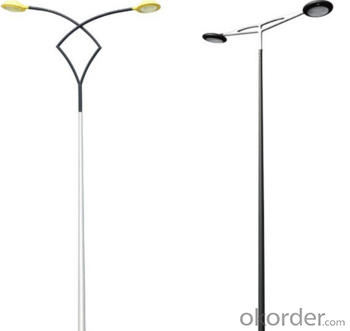
FAQ
1. How about the documents after shipment?
After shipment, we ll send all original documents to you by DHL, including Packing List.Commercial Invoice, B/L, and other certificates as required by clients.
2. How long is the delivery time?
Usually it takes 10-25days after receipt of the deposits or L/C, and it also depends on the quantity of your order.
3. How's the payment?
Telegraphic Transfer(T/T) or Letter of Credit(L/C)
4. Do You Arrange Shipment?
Yes, dear esteemed customers, for FOB or CIF price, we will arrange shipment for you. For EXW price, clients need to arrange shipment by themselves or their agents.
5. How is the package?
Usually, we arrange the standard out-package for exporting.
- Q: Are FRP pultrusion profiles resistant to high winds or hurricanes?
- FRP pultrusion profiles offer exceptional resistance against high winds and hurricanes. Combining the robustness of fiberglass with the longevity of polymers, FRP is a lightweight yet remarkably sturdy material that can endure severe weather conditions. Extensive testing has proven that FRP pultrusion profiles exhibit outstanding wind resistance properties. They possess a remarkable stiffness-to-weight ratio, enabling them to withstand the powerful forces generated by high winds without deformation or breakage. Additionally, the inherent flexibility of FRP permits it to absorb and distribute wind forces, minimizing the risk of damage. In the face of hurricanes, FRP pultrusion profiles have demonstrated their capability to withstand the intense winds and airborne debris associated with such extreme weather events. They have been successfully employed in various applications, including building facades, bridges, and utility poles, in areas prone to hurricanes. Moreover, FRP pultrusion profiles possess corrosion resistance, providing an extra advantage in withstanding high winds and hurricanes. Unlike traditional materials like steel or wood, FRP profiles do not rust or decay when exposed to moisture, making them even more suitable for these demanding weather conditions. Overall, with their exceptional strength, durability, flexibility, and corrosion resistance, FRP pultrusion profiles are an excellent choice for applications requiring resistance against high winds or hurricanes.
- Q: Are FRP pultrusion profiles resistant to chemical spills or leaks?
- Yes, FRP (Fiber Reinforced Polymer) pultrusion profiles are highly resistant to chemical spills or leaks. One of the key advantages of using FRP as a construction material is its exceptional chemical resistance. FRP profiles are made by impregnating continuous fibers with a thermosetting resin, resulting in a strong and durable composite material. The resin used in FRP pultrusion profiles is typically selected based on the specific chemical environment in which the profiles will be exposed. This allows for customization and optimization of the composite's resistance to various chemicals. Additionally, the fibers used in FRP are generally chemically inert, further enhancing the resistance of the profiles to chemical spills or leaks. FRP pultrusion profiles have demonstrated excellent resistance to a wide range of chemicals, including acids, alkalis, solvents, and corrosive substances. They are commonly used in industries such as chemical processing, water and wastewater treatment, oil and gas, and marine applications, where exposure to aggressive chemicals is prevalent. In addition to their chemical resistance, FRP pultrusion profiles offer several other advantages. They are lightweight, yet possess high strength and stiffness, making them ideal for applications that require structural integrity. They are also non-conductive, non-magnetic, and have excellent electrical insulation properties. Overall, FRP pultrusion profiles are a reliable choice for environments where chemical spills or leaks are a concern, as they provide robust resistance to a wide range of chemicals, ensuring long-lasting performance and minimal maintenance requirements.
- Q: What are the environmental benefits of using FRP pultrusion profiles?
- There are several environmental benefits associated with using FRP (Fiber Reinforced Polymer) pultrusion profiles. Firstly, FRP pultrusion profiles are lightweight and have a high strength-to-weight ratio. This means that less material is required to achieve the same structural integrity as traditional materials like steel or concrete. As a result, the production and transportation of FRP profiles consume less energy and generate fewer greenhouse gas emissions. Additionally, FRP pultrusion profiles are highly durable and resistant to corrosion, which increases their lifespan and reduces the need for frequent replacements. This not only saves resources but also reduces the amount of waste that ends up in landfills or requires recycling. Furthermore, FRP is non-conductive, making it an excellent alternative to metals in electrical applications. This property eliminates the risk of electrical accidents and reduces the need for insulation, which often involves hazardous materials. Moreover, the manufacturing process of FRP pultrusion profiles typically requires lower energy inputs compared to other materials. The pultrusion process itself is energy-efficient, and the raw materials used in FRP production, such as resins and fibers, can be sourced from renewable or recycled sources. Lastly, FRP pultrusion profiles are chemically inert and do not release harmful substances into the environment. This characteristic makes them suitable for various applications, such as water treatment plants, where avoiding chemical leaching is crucial for maintaining water quality. In conclusion, the environmental benefits of using FRP pultrusion profiles include reduced energy consumption, lower greenhouse gas emissions, extended product lifespan, decreased waste generation, decreased reliance on non-renewable resources, and minimized chemical leaching. These advantages make FRP a sustainable and eco-friendly choice for a wide range of industries.
- Q: Are FRP pultrusion profiles resistant to wear or abrasion?
- Yes, FRP pultrusion profiles are highly resistant to wear and abrasion. The combination of strong reinforcing fibers and a durable resin matrix makes them capable of withstanding harsh conditions and maintaining their structural integrity over time, even in high-stress environments. This resistance to wear and abrasion makes FRP pultrusion profiles an excellent choice for applications that require long-lasting and low-maintenance solutions.
- Q: How do FRP pultrusion profiles perform in high-wind areas?
- FRP pultrusion profiles are well-suited for high-wind areas due to their inherent strength and durability. These profiles are made from reinforced polymers, typically fiberglass, which provides excellent resistance to wind loads. FRP pultrusion profiles have high stiffness and flexural strength, enabling them to withstand the forces generated by strong winds without significant deformation or failure. Additionally, their corrosion resistance makes them highly suitable for coastal or harsh environments often associated with high-wind areas. Overall, FRP pultrusion profiles perform admirably in high-wind areas, offering reliable and long-lasting structural solutions.
- Q: Are FRP pultrusion profiles resistant to sulfuric acid?
- Yes, FRP pultrusion profiles are generally resistant to sulfuric acid due to the corrosion-resistant properties of the fiber-reinforced plastic material. However, it is important to consider the concentration and temperature of the sulfuric acid, as extreme conditions can potentially affect the resistance of FRP profiles.
- Q: Can FRP pultrusion profiles be used in the renewable energy and solar power industry?
- Yes, FRP (Fiber Reinforced Polymer) pultrusion profiles can be effectively used in the renewable energy and solar power industry. FRP pultrusion profiles possess several key characteristics that make them ideal for such applications. Firstly, FRP pultrusion profiles have high strength-to-weight ratio, meaning they are lightweight yet strong, which is crucial in the renewable energy sector where materials need to withstand various environmental conditions while being cost-effective. Secondly, FRP pultrusion profiles offer excellent corrosion resistance, ensuring durability and longevity in outdoor and potentially corrosive environments, such as solar power plants or wind farms. Additionally, these profiles have excellent electrical insulation properties, making them suitable for electrical applications commonly found in the renewable energy industry. Moreover, FRP pultrusion profiles can be easily customized into various shapes and sizes, enabling the design and engineering of complex structures required for solar power installations or wind turbine blades. Furthermore, FRP materials are non-conductive and non-magnetic, making them safe for use in electrical and magnetic fields associated with renewable energy systems. Overall, FRP pultrusion profiles offer a combination of strength, durability, lightweight, corrosion resistance, and electrical insulation properties that make them highly suitable for use in the renewable energy and solar power industry.
- Q: Plastic or better glass fiber reinforced plastic better?
- Plastic steel and glass fiber reinforced plastic have their own advantages, in the mechanical manufacturing and vehicles, ships and other industrial fields, glass fiber reinforced plastic is used; in furniture decoration, the use of plastic steel profiles.
- Q: Can FRP pultrusion profiles be used in the production of electrical insulators?
- Indeed, FRP pultrusion profiles have the potential to be utilized in the manufacturing of electrical insulators. These profiles are renowned for their exceptional electrical insulation characteristics, rendering them appropriate for a wide array of electrical applications. The non-conductive and high-strength attributes of FRP materials make them an ideal choice for insulating components within electrical systems, including insulators. The creation of FRP pultrusion profiles entails saturating continuous fibers like fiberglass, carbon fiber, or aramid with a polymer resin, which is subsequently solidified and shaped through the pultrusion process. This process yields a resilient and lightweight material that exhibits remarkable electrical insulation properties. Electrical insulators serve the purpose of obstructing the flow of electric current between conductive materials or components. They are indispensable in electrical systems as they ensure safety and prevent electrical leakage or short circuits. FRP pultrusion profiles can be tailored and manufactured to meet the specific requisites of electrical insulators, encompassing dimensional accuracy, mechanical strength, and electrical insulation performance. Moreover, FRP pultrusion profiles offer numerous advantages when compared to conventional materials such as wood, porcelain, or ceramics. They possess corrosion resistance, possess a high strength-to-weight ratio, and can be easily customized to fulfill the specific demands of electrical insulator applications. Furthermore, FRP pultrusion profiles are non-conductive, a pivotal factor for electrical insulation. In summary, owing to their exceptional electrical insulation properties, durability, lightweight nature, and customization possibilities, FRP pultrusion profiles are exceedingly suitable for the production of electrical insulators.
- Q: What are the mechanical properties of FRP pultrusion profiles?
- FRP pultrusion profiles are highly valued in various industries due to their desirable mechanical properties. Some of the key properties include the following: 1. Exceptional Strength: FRP profiles have impressive tensile and flexural strength, making them suitable for load-bearing applications. The reinforcing fibers, like carbon, glass, or aramid, provide superior strength-to-weight ratios compared to materials like steel or aluminum. 2. Lightness: FRP profiles are significantly lighter than metals, leading to reduced costs for transportation and installation. Their low weight also makes them easier to handle and manipulate during construction or manufacturing processes. 3. Resistance to Corrosion: Unlike metals, FRP profiles are inherently resistant to corrosion. They do not rust or degrade when exposed to harsh environments, including moisture, chemicals, or UV radiation. This makes them ideal for marine, chemical, and infrastructure industries. 4. Dimensional Stability: FRP profiles maintain their shape and size even under extreme temperature variations. They have minimal rates of thermal expansion and contraction, ensuring long-term structural integrity. 5. Electrical Insulation: FRP profiles are non-conductive and possess excellent electrical insulation properties. This is crucial in applications where electrical conductivity must be avoided, such as near power lines or in electrical enclosures. 6. Versatile Design: FRP pultrusion profiles can be manufactured in various complex shapes and sizes, allowing for customized designs to meet specific requirements. They can be easily molded or formed during the manufacturing process, making them adaptable to diverse project needs. 7. Impact Resistance: FRP profiles have good impact resistance, absorbing and dispersing energy when subjected to mechanical loads. This ensures durability and structural integrity, making them suitable for construction, transportation, or sporting equipment. Overall, the mechanical properties of FRP pultrusion profiles make them an appealing alternative to traditional materials in a wide range of industries. They offer strength, durability, and corrosion resistance while being lightweight and easy to work with.
Send your message to us
FRP Lighting Pole made in China
- Loading Port:
- Shanghai
- Payment Terms:
- TT OR LC
- Min Order Qty:
- 100 m.t.
- Supply Capability:
- 10000 m.t./month
OKorder Service Pledge
OKorder Financial Service
Similar products
Hot products
Hot Searches
Related keywords
